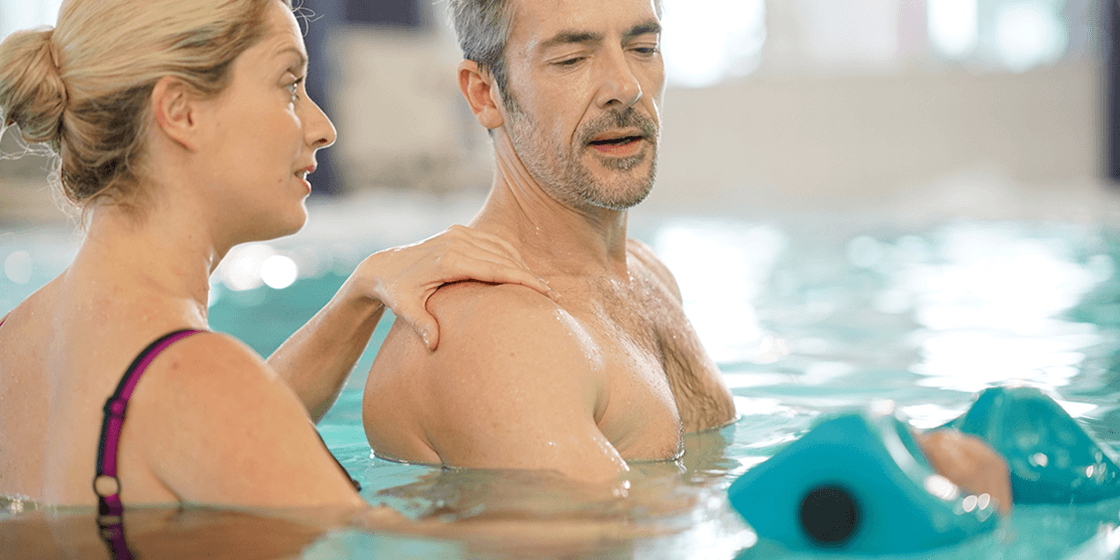What is Osteoarthritis?
Osteoarthritis is a progressive condition that affects millions of Americans every year. Unlike other forms of arthritis, this condition solely affects the skeletal joints. In fact, osteoarthritis generates pain by causing the breakdown of the cartilage that coats these joints. This protective cartilage is crucial to the fluid, pain-free movement of our joints and the smooth movement of our bodies.
When this cartilage breaks down over time, bone-on-bone friction, the development of bone spurs, and a change in the shape of the joint itself often results. Although the main cause for this degeneration can be attributed to the normal aging process, excess body weight or chronic strain on the joints from certain occupations, sports, or hobbies, can speed up the loss of this cartilage.Osteoarthritis can be debilitating, often resulting in the sufferer missing out on life. Despite the advances in orthopedic medicine over recent years, there remains no cure for this degenerative condition. A number of treatments, including NSAID pain medications and corticosteroid injections, can help to slow the advance of osteoarthritis. Furthermore, your doctor can perform surgery to remove bone spurs or floating pieces of bone.
Not everyone is interested in surgical interventions or medications to combat osteoarthritis, however.
Aquatic Therapy: A Nonsurgical Option for Osteoarthritis Relief
Fortunately, a variety of complementary therapies exist that have been found to aid in osteoarthritis relief. These options include physical therapy, acupuncture, and massage therapy. Exercise, which promotes weight loss, flexibility, and muscular strength, is high on the list of beneficial therapies for osteoarthritis. In fact, strong, flexible muscles are proven to help support these compromised joints.
You might be thinking that exercise sounds like it could be pretty hard on the joints… Walking a few miles can be rough on osteoarthritic knees and even yoga—a milder form of exercise—can aggravate the joints depending upon what pose you are trying to master. If these legitimate concerns bother you, consider hitting the water for aquatic therapy!
Swimming—and a variety of other exercises designed for the pool—are incredibly beneficial for the joints and the body as a whole. The buoyancy of water relieves the pressure off of joints, while allowing for a thorough aerobic, strength-building, and tension-releasing workout. (It can also be quite enjoyable!)
According to the Arthritis Foundation, osteoarthritis is the most common joint disorder in the world. The condition affects over 27 million Americans alone. It is so common that approximately 50% of Americans will experience osteoarthritis of the knee in their lifetime. And, this statistic doesn’t even include the millions of Americans who will never develop osteoarthritis of the knee, but who will experience osteoarthritis elsewhere in the body!Aquatic therapy doesn’t necessarily mean getting into the pool and swimming lap after lap until you just can’t go anymore (although laps can be great if that’s something you are into). In actuality, aquatic therapy boasts a wide variety of possibilities for pool-based exercise. The options and styles of exercise are ever-evolving; so, make sure that you find the option that’s best for you! Long-term success and improvement in your physical health is more likely if you actually enjoy whatever you’re doing.
Best Types of Aquatic Therapy for Osteoarthritis
Some exciting options for aquatic therapy include:
- Water Aerobics: An oldy but a goody, water aerobics gained popularity in the 1950s. Nearly 70 years later, the orthopedic community still regards water aerobics as a highly effective option for osteoarthritis relief. Using the water to simulate running, walking, cross-country skiing—even dance—helps you activate the joints without the pain-inducing pressure of weight or gravity.
- Pool Yoga: Our muscles have a tendency to tighten around painful joints or inflamed nerves in our body. Yoga can help to release this tension, allowing for the fluid movement of the joints and the relaxation of the mind. Take the benefit of yoga to the pool, where the weightlessness of water can facilitate the stretching process.
- Hydro-Spinning (or Aqua Cycling): Yes, they now make stationary bikes for the pool! If you once loved biking, but your joints just can’t handle repetitive peddling anymore, try water-based biking. Hydro-Spinning combines the aerobic exercise of biking with the relief on joints—especially those knees and hips—that only water can provide.
- Aquatic Weight-Training: Think weight-lifting but in the opposite direction … weight-pushing. Using a variety of foam weights, this technique utilizes the resistance created by the floating weight as you force it down into the water. This strength-building exercise is an excellent way to enhance muscular strength without placing unnecessary strain on your painful joints.
- Ai Chi: Ai Chi adapts the principles Tai Chi, which uses slow movements, relaxation techniques, and strength-building, to the water. Connecting your breath to your movement, muscles can loosen up and move fluidly, while building the strength needed to support your joints.
Check out your local gym or YMCA to see which options each offers for aquatic fitness. Don’t hesitate to contact your physician or physical therapist either. These professionals often know which forms of exercise for osteoarthritis are being offered locally. Take control of your osteoarthritis pain by getting into the pool—and even have fun while doing it! To learn how you can supplement aquatic therapy with pain management techniques or minimally invasive treatments, please contact one of our award-winning osteoarthritis surgeons at 973-791-4101.
